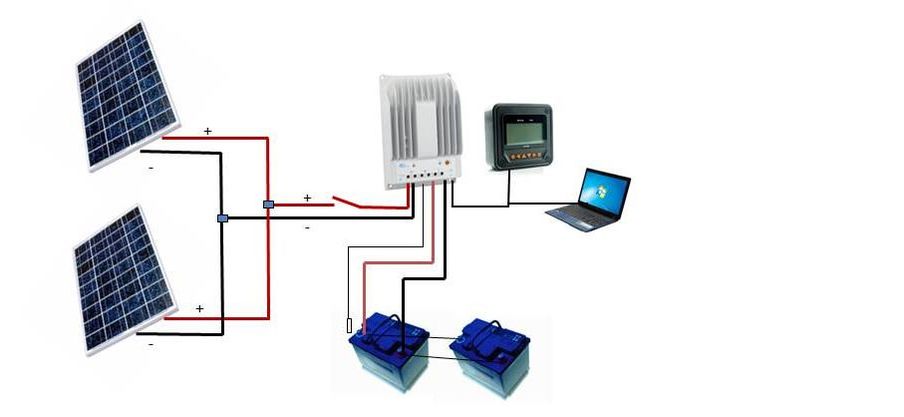|
I am often asked how to best turn a marine solar system on and off and if doing so will damage the panels. Below are some thoughts:
The solar controller is powered by your batteries, not your solar panels so you don't want to disconnect the controller from the battery bank to shut down you solar system as the controller will need to reboot and reset each time it is powered up. Rather, the proper way to turn off or shut down your solar system is by opening the positive wire from your solar array to your controller. We suggest a simple on/off switch in the positive wire from the solar array to the controller. Turning the solar array on and off with this switch will do no damage to the solar system. There is a reason it is desirable to be able to shut down the solar system with the switch or breaker between the solar panel and the controller. When charging off the alternator, you want maximum output going to the battery bank for bulk charging until the batteries are up to proper voltage. Some alternators, especially alternators with smart regulators sense the state of charge of the battery bank and determine to apply either a bulk or a float charge. If the panels are connected and producing, the regulator of the alternator will see the sum of the battery charge plus the solar charge coming from the panels. This apparent heightened state of charge may result in the regulator putting the alternator in float mode prematurely because it thinks the battery bank state of charge is higher than it really is. The same applies for the shore charger. This condition only occurs with certain combinations of alternator regulators, solar controllers and shore power chargers. Most of the time it is not an issue. Confused? As a general rule, to be certain of getting the maximum performance from your engine alternator and your shore charger, open the solar breaker when they are in use. Otherwise, experiment with your equipment and see if there is interference between the units as described above. If not, leave the solar system on all the time; that is what we do.
18 Comments
Several fellow mariners have reported their engine Tachs sometimes give sporadic readings with the needle bouncing around. I recently had a similar experience on my boat and did some research. Most high output alternators with smart regulators and many solar panel controllers charge batteries using a technology called Pulse Width Modulation (PWM). The Tach uses PWM to determine the alternator (and thus the engine) RPM. The two PWM sources may, at times, create an interference. Thus the sporadic readings on the Tach.
The solution to this is disconnect the solar panel when the alternator is running so the controller doesn't function. This can be easily done by putting a switch in the positive wire leading from the solar panel to the controller. Alternatively, you could put in relay (closed when no powered) on this wire and wire it so the relay is open when the engine is running and closed when it is not. There is another very good reason to put a switch in the panel to controller wire. The smart regulator reads the battery charge condition and sets the output of the alternator accordingly. If the solar panel is producing power, the regulator will see the net of the battery charge plus the panel output and thus may prematurely put the alternator in float mode. this will result in getting limited performance out of that big expensive alternator. |
Categories
All
AuthorThomas Trimmer has been cruising with his Ericson 38 sailboat on the Great Lakes for over 20 years. He has pioneered the use of solar energy for wilderness cruising. He is continually designing and building equipment to simplify and enhance the cruising experience. Archives
April 2024
|
Efficiently Powering Your Vessel/Van. Call/email/chat any time, we're happy to help you work through designing your solar system.
Home Page Solar Panels Mounting Kits Product Page Marine Solar Systems Gallery of Installations Customer Comments Contact Us
Call 248 705-8337 or email [email protected]
Article On How To Size Your Solar Panels For Your Boat
Customer Reviews Return Policy Privacy Policy Shipping Times/Rates
Home Page Solar Panels Mounting Kits Product Page Marine Solar Systems Gallery of Installations Customer Comments Contact Us
Call 248 705-8337 or email [email protected]
Article On How To Size Your Solar Panels For Your Boat
Customer Reviews Return Policy Privacy Policy Shipping Times/Rates


 RSS Feed
RSS Feed